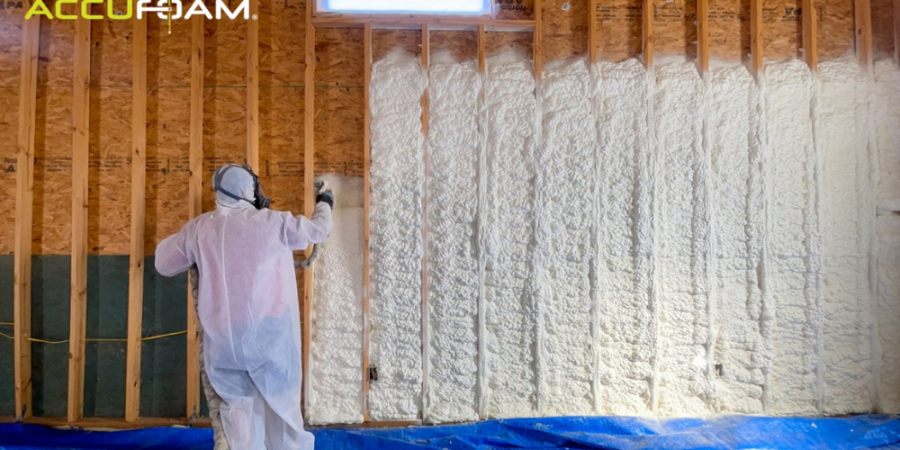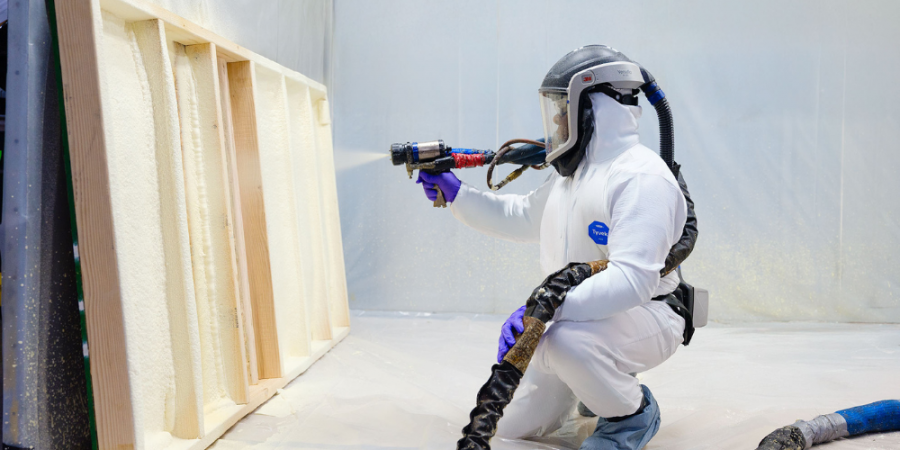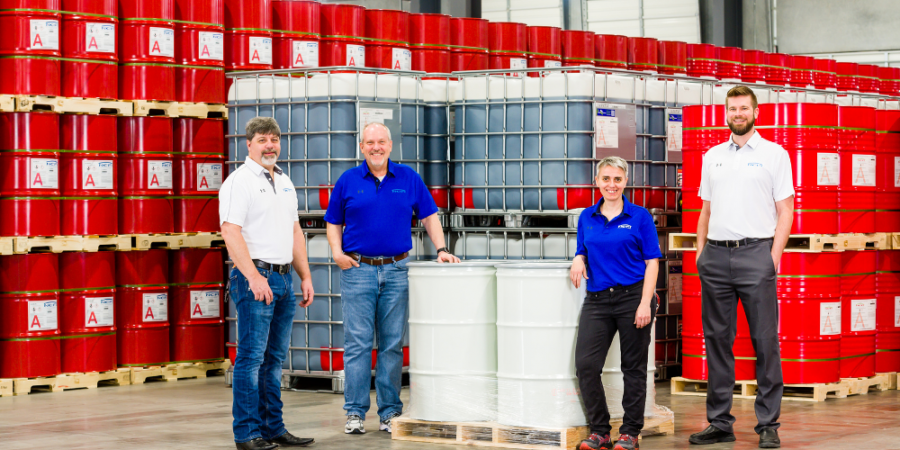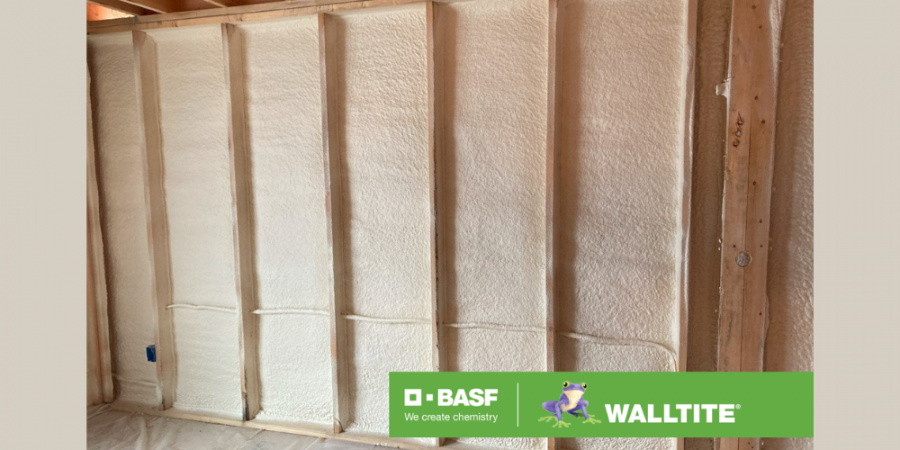Attic Rain
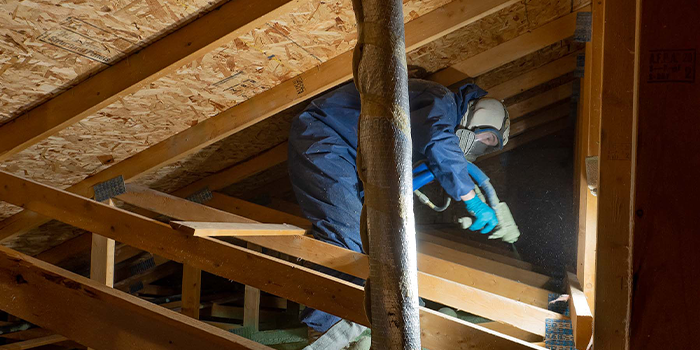

Spray Foam Magazine – To help homeowners safeguard against problems such as attic rain, spray foam installers first need to understand their mindset and how to push prevention as well as solving attic rain hazards after they occur.
As most spray foam installers are aware, when moisture accumulates in the attic, followed by a drop in the temperature, those freezing droplets thaw when the weather warms up. That moisture can then cause major issues including wood rot and mold. Attic rain issues are a real headache for people living in colder climates, but they can be prevented. Spray Foam Magazine spoke with Ryan McKeen, Sales Manager for Beyond Foam Insulation Ltd. in Calgary, Canada to find out more.
Unlike spray foam installers, the average homeowner may have little to no experience with a building envelope or attic rain. They just look up and see water staining and assume it’s the roof because it is above them. They end up panicking and will often go straight to a roofer. Mckeen says, “This is part of what we are hoping to improve by educating the average homeowner on attic rain.” He goes on to say, “We provide this spray foam service to about 150+ homes a year. For example, there is a duplex in NW Calgary and the client had been having terrible roof issues for a few years. We removed his existing loose fill insulation and proceeded to install 3.5" of our preferred 2lb foam product called Heatlok Soya by Huntsman. We then added air chutes and installed loose fill on top of the foam to achieve a result of R52.”
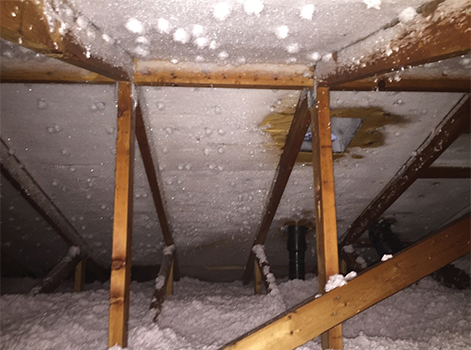
Although water staining on the ceiling of a home is most often not roof related, spray foam companies should recommend having the roof inspected at the same time to have it ruled out entirely.
For residential shingle roofs, Beyond Foam recommends homeowners to have the roof inspected every five years for the first 15 years. The older the roof the more frequently it should be inspected. “After 15 years we recommend having it inspected every two years. Flat roofs should be inspected annually to ensure water drainage. They need to be inspected more frequently as water can pool on them and leaks are more common.”
Advice to homeowners on other periods when a roof may need to be inspected are:
- After a severe storm of any kind, especially after a hailstorm
- Large trees that overhang the roof
- If a lot of granules are coming off the roof, there may be buildup at the down spouts
- Loose or flapping shingles
- Water spilling over the eaves may indicate the eave trough needs cleaning
It’s important to educate people in trying to prevent attic rain causing damage by having them monitor the humidity inside their home and keep it below 25% when it is approaching -20 outside. Apart from the understandable use of dehumidifiers and air conditioners, teach people to reduce moisture in the air with simple tricks like using their ventilation fans when showering or cooking, fix then insulate any leaking pipes, clean gutters, and make sure downspouts are directed away from the home and extended at least six feet.
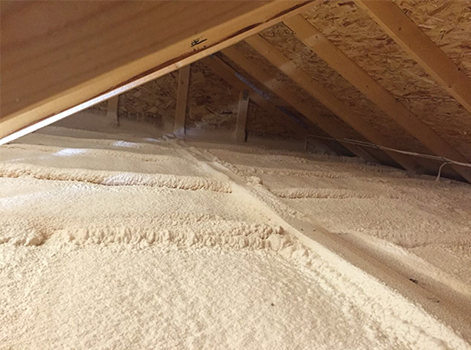
Three and a half inches of two-pound closed-cell foam installed to air seal the attic and prevent future attic rain.
Secondly, teach homeowners to improve their ventilation in the attic. This can include but is not limited to:
- Opening plywood soffits often on older homes, so the air can move into the attic.
- Having lower roof intakes installed on infill homes where ventilated soffits were not an option due to building code at the time.
- When minor renovations are completed, ensure that electricians are properly sealing pot lights or other penetrations through the attic with a vapor barrier.
Spray foam companies should have a responsibility to alert homeowners about attic rain prevention but also help identify and provide the services to rectify attic rain issues. According to Beyond Foam there needs to be more education for the homeowners about this subject. They need to know about improving ventilation of the attic and how a sealed vapour barrier can stop air movement between the house and attic. “We also work diligently with drywall/texturing companies to rectify the cosmetic side of the repairs. For example, water stains in the ceiling,” concludes McKeen.
The homeowner needs to be informed to help achieve a healthy attic space and protect it from future hazards. They also need to know to treat any issues like moisture and mold, before having any install of the insulation. This will help provide them with a strong, warm, and safe attic space, and peace of mind for the future. The spray foam installer will also have peace of mind that they did their best to educate the homeowner on how to achieve a healthy attic.
For use by SprayFoamMagazine.com & Spray Foam Magazine
Disqus website name not provided.




